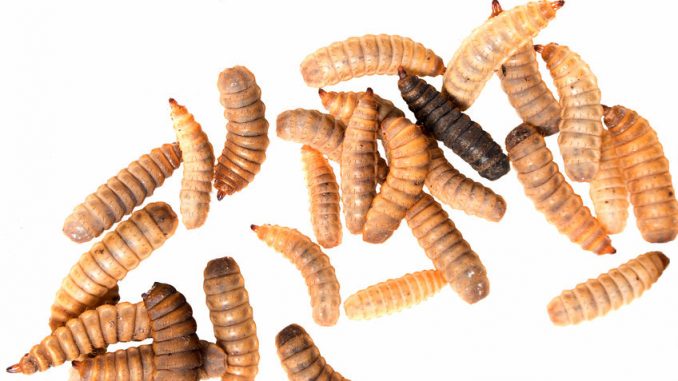
Food waste is a shocking and troubling issue and reflects on our current value of the planet. There is however a potential saviour in the form of Black Soldier Flies which for all their yuk factor could munch their way through most of that organic material that is discarded.
It is estimated that we waste 55 million tons of food annually and that represents 40% of our food supply. It is not just developed nations that are affected by this but frankly all nations around the world have to deal with this issue.
The black soldier fly Hermetia illucens (L.) (Diptera: Stratiomyidae) is emerging as a possible technical solution in waste processing. This fly in particular is being mass produced on a great scale. The fly is considered a future protein source along with the yellow mealworm (Tenebrio molitor, YMW).
Both insect larvae convert different forms of organic matter into body mass (Čičková et al., 2015).
Black Soldier flies are found around the world and have adapted to a wide range of habitats. That makes them unsurprisingly successful. The larvae can eat over 95% of all food waste. They not only live for a long time for larvae which is 2 weeks but they are a good protein source too for livestock.
The adult fly has no mouth and can only for up to 8 days until all its food reserves are used up. Clearly, they have evolved where the adult is only required for reproduction.
The adults prefer to lay their eggs in manure, on worn droppings, decaying bodies and to some extent garbage. The larvae will feed on whatever food is to hand reducing its total volume by up to half. The larval form has six instars.
When the larvae reach the pupating stage they look for a dry and protected place away from their feeding place. Then they pupate and turn into small black flies.
The larvae can almost completely reduce aflatoxin content in food wastes which means that contaminated food feedstock can be repurposed. What’s more important – they do not accumulate these toxins.
References
Čičková, H.; Newton, G.L.; Lacy, R.C.; Kozánek, M. (2015) The use of fly larvae for organic waste treatment. Waste Manag. 35, pp. 68–80 (Article).


Leave a Reply